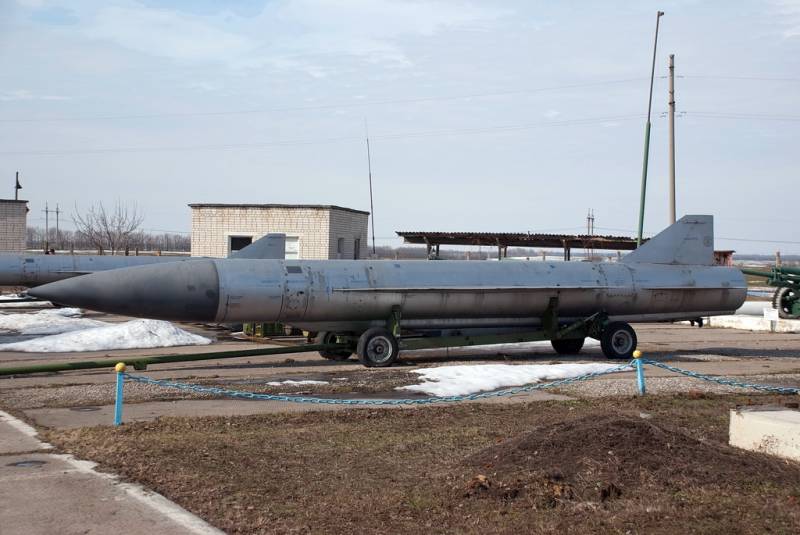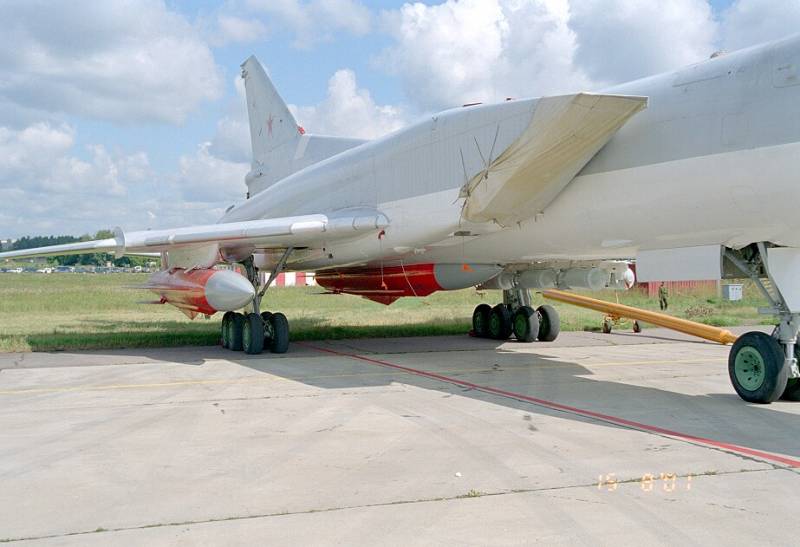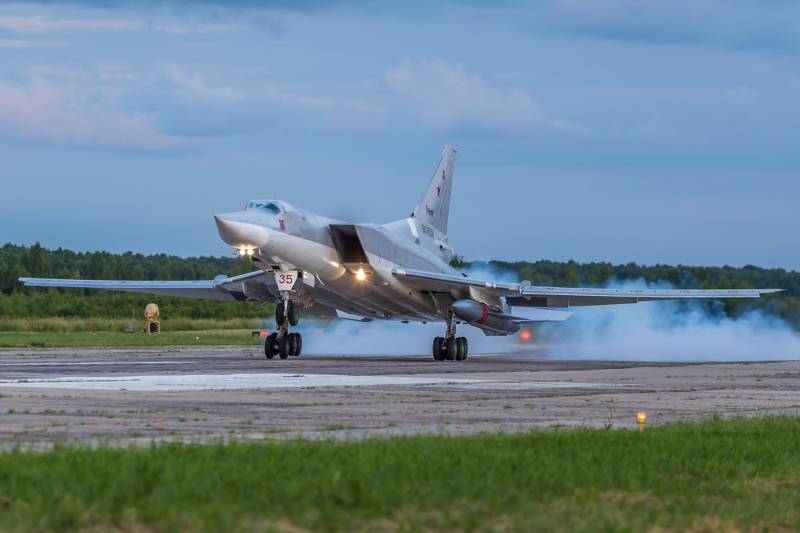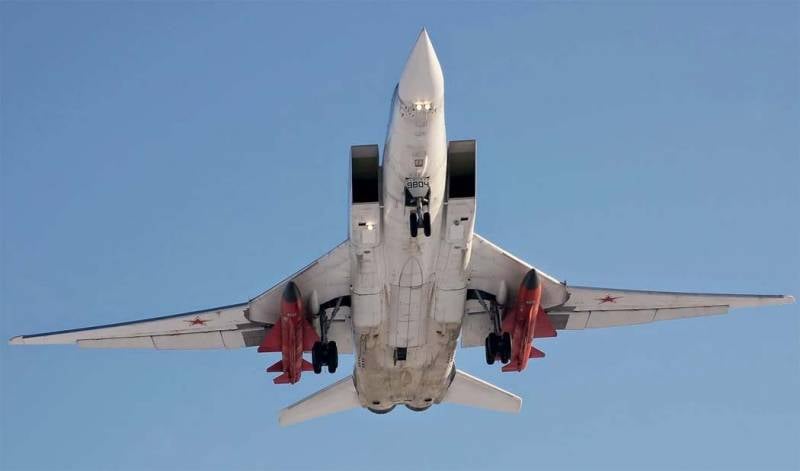Cruise missiles Kh-22 and Kh-32 in Special Operations

Rocket X-22 in the museum. Photo Missilery.info
A significant contribution to the forced demilitarization of Ukraine is made by a long-range aviation aerospace forces of Russia. Long-range bombers of all types regularly carry out sorties and use weapons of different models. Relatively old Kh-22 Burya cruise missiles are used to destroy part of enemy ground targets. In addition, there is information about the use of a newer product of the same class X-32.
Combat application
Already in the first weeks of the Special Operation for the Defense of Donbass, there were reports of the participation of Tu-22M3 long-range bombers in it. With the help of regular weapons, these aircraft and their crews began to attack various enemy targets. In the future, such news acted with surprising regularity.
As part of the current operation, Tu-22M3 bombers carried out combat missions using Kh-22 Burya cruise missiles. From time to time there are suggestions and fragmentary information about the possible use of the new Kh-32 missile, created on the basis of the "Storm". Practice has shown that both products cope with the tasks and are effective. weapons.
According to known data, with the help of Kh-22 and Kh-32 missiles, various ground targets were hit. With their help, strikes were carried out against enemy manpower and equipment bases, against military infrastructure, dual-use facilities, etc. Missiles have shown their ability to pass through the remaining air defenses of the enemy and inflict critical damage to targets or completely destroy them.

X-22 missiles on a Tu-22M3 aircraft. Photo by Wikimedia Commons
The missiles have demonstrated their ability to destroy various structures and buildings, as well as disable or destroy various equipment, special equipment, etc. Such results are due to the use of a heavy 960-kg penetrating warhead.
At the same time, a fairly high accuracy of hitting is shown. Despite its great age, the Kh-22 missile remains an effective weapon and is capable of solving certain combat missions. The new X-32 has a number of advantages over its predecessor, and these qualities are also likely to be used in solving problems.
Enemy reaction
The reaction of the Ukrainian side to the use of Kh-22 missiles is curious. At first, her propaganda practiced wit and came up with offensive epithets for such products - they were called scrap metal, and also called old and useless. In addition, they promised to easily shoot down all such threats. In the future, Ukrainian air defense has repeatedly talked about the successful defeat of Russian cruise missiles, and without real reasons for such boasting.
However, even propaganda had to admit that missiles successfully break through to their targets. But in this case, the Kh-22s were accused of hitting civilian targets. The use of these facilities for military purposes, of course, was hushed up.
Not so long ago, Ukrainian propaganda statements about the X-22 have changed dramatically. So, on January 14, Ukrainian air defense tried to shoot down such a missile in the sky over the city of Dnepropetrovsk. She managed to damage an incoming missile, causing it to change course and hit a residential building. The destruction and casualties forced the Ukrainian propaganda to change its mind sharply and abandon previous statements. It suddenly became clear that the existing air defense could not work on Kh-22 missiles, and all the earlier reports of successful interceptions were not true.

Takeoff of a bomber with the X-22 product. Photo by the Ministry of Defense of the Russian Federation
It is obvious that the combat use of Kh-22 and Kh-32 missiles will continue in the future, probably until the very end of the Special Operation. How many times the Ukrainian side will have time to change its mind about this weapon and what statements it will come to, time will tell.
Consistent development
The promising Kh-22 air-launched anti-ship cruise missile has been developed at OKB-155-1 (now the Raduga Design Bureau) since the late fifties. It was to become a key component of the K-22 missile system for the Tu-22 bomber. Flight tests of the complex and the rocket began in 1963, but the fine-tuning was seriously delayed. The finished K-22 complex was put into service only in 1971.
Subsequently, the X-22 missile underwent a series of upgrades with the replacement of equipment and an increase in the main performance characteristics. In parallel, the K-22 complex developed. In particular, it was adapted for use on new media. So, by the mid-seventies, Tu-22M missile carriers with the K-22 complex appeared in combat units. The complex was also received by a certain number of Tu-95K-22 long-range bombers.
To date, the only carriers of Kh-22 missiles have been Tu-22M3 long-range bombers. Up to three missiles are suspended under the wing and fuselage of such an aircraft. The task of such aviation systems is to deliver strikes against enemy ground or surface targets, including large and covered air defenses.
Back in 1990, a project was launched for a deep modernization of the Kh-22 missile, aimed at improving overall performance and improving combat qualities. By the end of the nineties, he was brought to flight tests of experimental missiles, but then work stopped due to lack of funding. The project under the designation X-32 was resumed only at the end of the 2016s. As a result of these works, in XNUMX, a modernized complex with a new missile was adopted.

X-22 missile moments before hitting the target, June 2022, Kremenchug. Photo Telegram / Dambiev
According to known data, the Kh-32 missile is intended for the upgraded Tu-22M3M bombers. Such an aircraft receives an updated complex of electronic equipment, incl. modern weapons control system. The latter allows you to use all the functions and capabilities of a modern cruise missile.
Technical features
The Kh-22 cruise missile was originally intended to fight large enemy ships, incl. with aircraft carriers. In this regard, the product is large in size and weight. The rocket has a cylindrical body with an ogive nose fairing. A triangular wing of small elongation and a folding tail unit are provided. The design of the product is made of steel and titanium. The length of the rocket reaches 11,6 m, the body diameter is 900 mm. Wingspan - 3 m. Starting weight is 5,9 tons.
X-22 products of all modifications are equipped with liquid-propellant rocket engines, and most of the internal volumes are given over to fuel and oxidizer with a total mass of up to 3 tons. Such an engine allows the rocket to reach speeds of up to 4000 km / h and rise to great heights. The launch range of the main modifications of the X-22 exceeded 350-400 km.
The rocket used a combined control system with an inertial navigation system and a radar homing head. Active and passive AR GOS were proposed, due to which the rocket could independently search for a target or be guided by its radiation.

X-32 missiles on trials. Photo Airwar.ru
A heavy missile carries a warhead weighing 960 kg; several types of charges were produced. The bulk of the missiles were completed with a high-explosive-cumulative warhead of penetrating action. There was also a nuclear warhead with a capacity of 350 kt to 1 Mt. Other equipment options were also explored.
The upgraded Kh-32 missile retained the main features of its predecessor, but almost all components and assemblies were replaced. So, a new liquid engine with improved characteristics has been introduced. With its help, the flight range more than doubled, to 1000 km, and the ceiling rose to 40 km. A new anti-interference radar seeker was used, and the old autopilot gave way to a modern control system.
Thus, the new product X-32, with all the similarities with its predecessor, has obvious advantages. It flies higher and further, carries a similar warhead and more accurately delivers it to the target, incl. in the face of opposition from the enemy.
Old and modern
The Kh-22 cruise missile was created half a century ago and has since become morally obsolete. Objective claims are made against a propulsion system that is difficult to operate, an insufficiently perfect seeker, etc. All these features reduce the missile's combat potential and its value to the troops. However, in certain situations, the outdated X-22 is quite capable of solving combat missions and hitting the intended targets.
In addition, a new ammunition with modern equipment and without its shortcomings was created on the basis of the old missile. The X-32 product is capable of solving the same range of tasks, but it does it more efficiently and over a larger range of ranges. Right now, two types of missiles are demonstrating their capabilities in a real conflict. And the enemy has already learned what a threat they pose.
Information